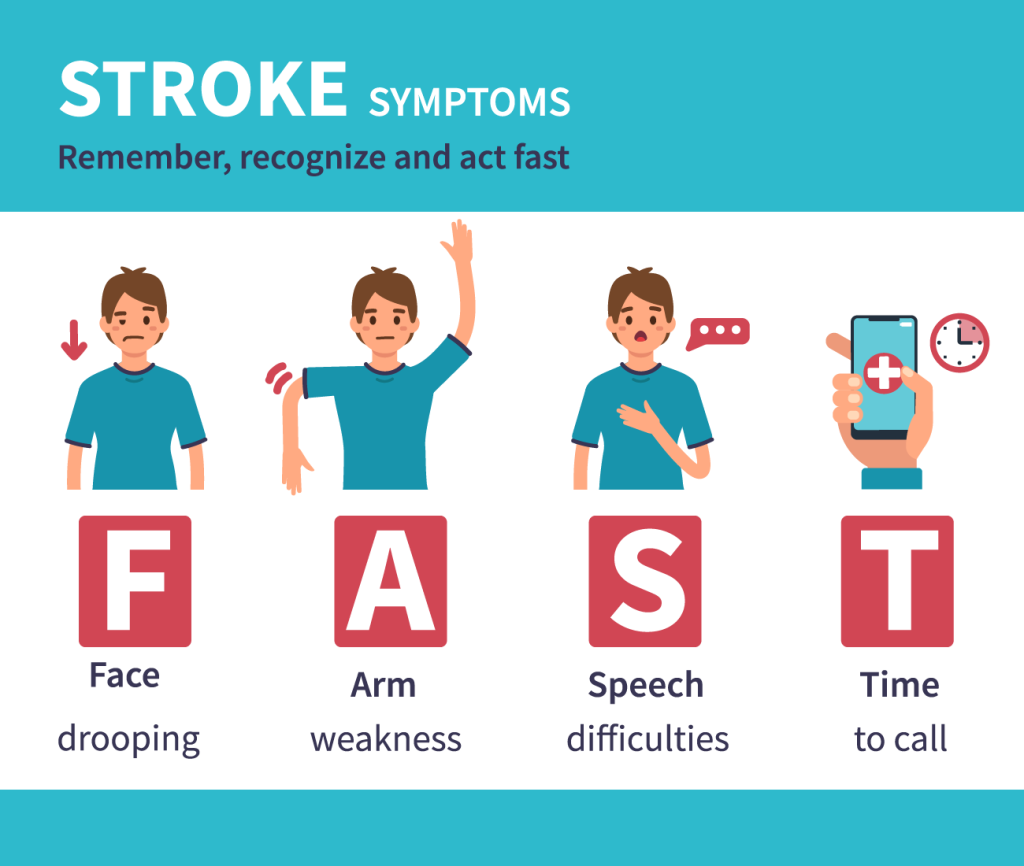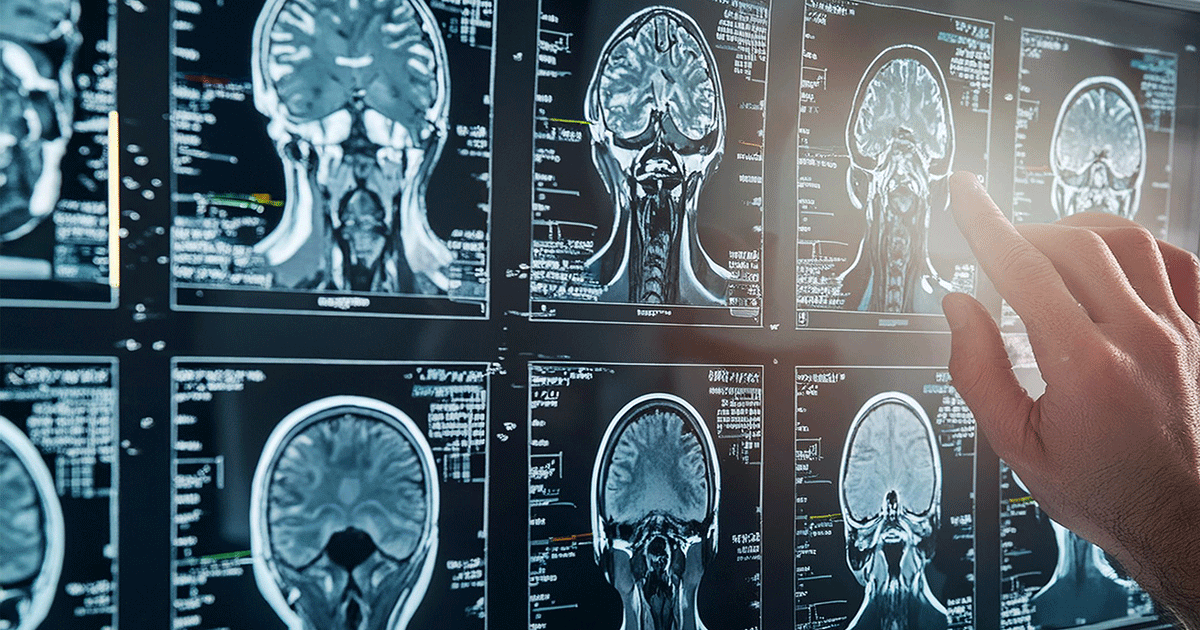Time Lost Is Brain Lost.
Each year, nearly 800,000 people in the U.S. experience a stroke. It’s the fifth leading cause of death and a major cause of disability—yet many strokes can be prevented or treated if caught early. The key? Awareness and fast action.¹
What Is a Stroke?
A stroke happens when blood flow to the brain is blocked or when a blood vessel in the brain bursts. This cuts off oxygen, causing brain cells to die. There are two main types:
– Ischemic Stroke: Caused by a clot blocking blood flow (about 87% of all strokes).²
– Hemorrhagic Stroke: Caused by bleeding in the brain due to a ruptured vessel.
– A TIA (Transient Ischemic Attack) is a temporary blockage, often called a “mini-stroke”—but it’s a serious warning sign of a future stroke.³
What to Look For – Think BE FAST:
Time is critical during a stroke. Use the BE FAST method to spot symptoms quickly:⁴
- Balance: Sudden loss of balance or coordination
- Eyes: Sudden blurred or double vision or loss of vision
- Face: One side of the face droops when smiling
- Arms: One arm drifts downward or is weak when raised
- Speech: Slurred speech or trouble speaking clearly
- Time: Call 9-1-1 immediately if you see any of these signs
Even if symptoms go away, don’t ignore them—it could be a TIA.
What to Do in a Stroke Emergency
- Call 9-1-1 immediately. Don’t try to drive or delay help.⁵
- Avoid giving food, drinks, or medications, especially if they’re having trouble swallowing or speaking.⁶
- Note the time. Doctors need this to determine if certain treatments like tPA (a clot-busting drug) can be used.
- Keep the person safe. Help them sit or lie down and stay calm until emergency services arrive.

Who’s at Risk?
Stroke can affect anyone, but risk increases with certain conditions and behaviors:⁷
- High blood pressure, diabetes, or high cholesterol
- Smoking or secondhand smoke exposure
- Family history of stroke
- Obesity or physical inactivity
- Excessive alcohol use or drug abuse
- Age (especially over 55), though strokes can occur at any age
Prevention Is Power
Up to 80% of strokes are preventable with healthy lifestyle choices and medical care.⁸ Here’s how to reduce your risk:
• Control blood pressure – the leading risk factor for stroke
• Eat a balanced diet: plenty of fruits, vegetables, and whole grains
• Stay physically active – aim for 30 minutes most days
• Quit smoking
Life After a Stroke
Stroke survivors often experience physical, cognitive, or emotional challenges. However, rehabilitation and support services can lead to meaningful recovery.⁹ Speech therapy, physical therapy, and mental health support are essential parts of the healing process.
A stroke can strike without warning, but with awareness, quick action, and prevention, lives can be saved.
References
1. Centers for Disease Control and Prevention. (2023). Stroke Facts. https://www.cdc.gov/stroke/facts.htm
2. American Stroke Association. (2022). Types of Stroke. https://www.stroke.org/en/about-stroke/types-of-stroke
3. National Institute of Neurological Disorders and Stroke. (2022). Transient Ischemic Attack. https://www.ninds.nih.gov/health-information/disorders/transient-ischemic-attack
4. American Heart Association. (2023). BE FAST: Stroke Warning Signs. https://www.heart.org/en/about-us/heart-attack-and-stroke-symptoms
5. Mayo Clinic. (2023). Stroke: First Aid. https://www.mayoclinic.org/first-aid/first-aid-stroke/basics/art-20056685
6. Johns Hopkins Medicine. (2022). Stroke Emergency Response. https://www.hopkinsmedicine.org/health/conditions-and-diseases/stroke
7. CDC. (2023). Know the Risk Factors for Stroke. https://www.cdc.gov/stroke/risk_factors.htm
8. World Stroke Organization. (2022). Prevent Stroke: Healthy Lifestyle Tips. https://www.world-stroke.org/prevention
9. National Stroke Association. (2023). Life After Stroke. https://www.stroke.org/en/life-after-stro

